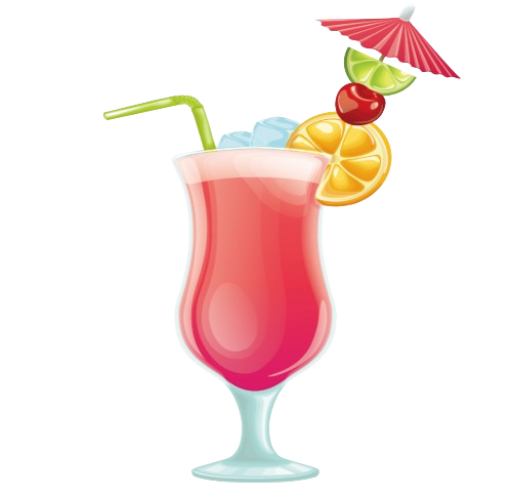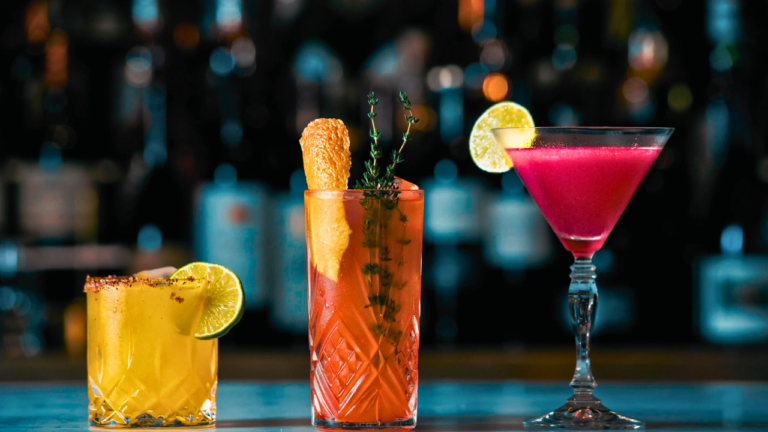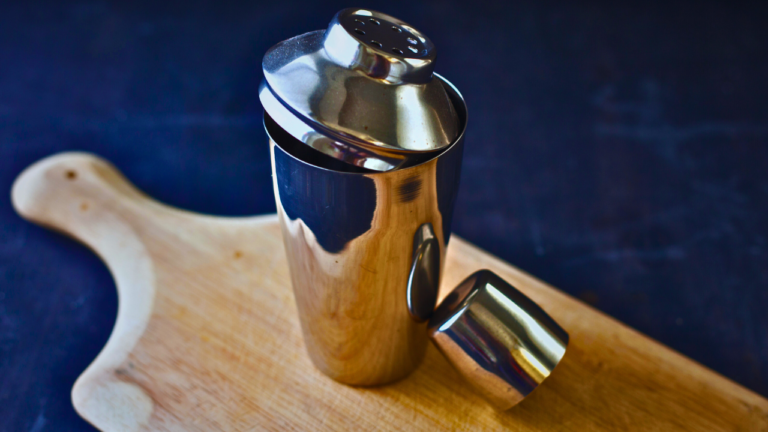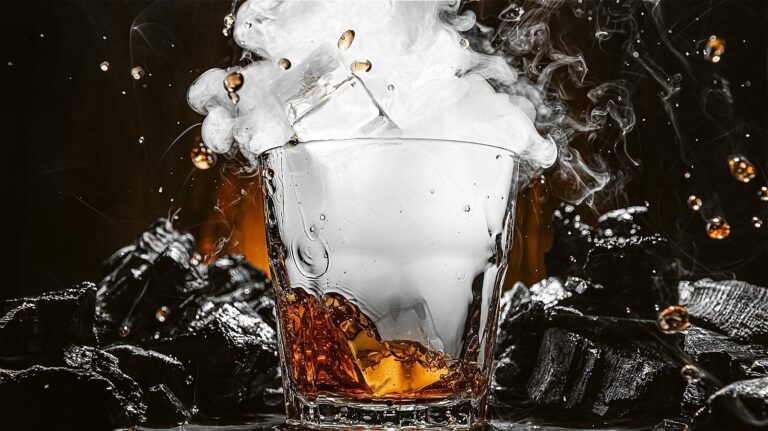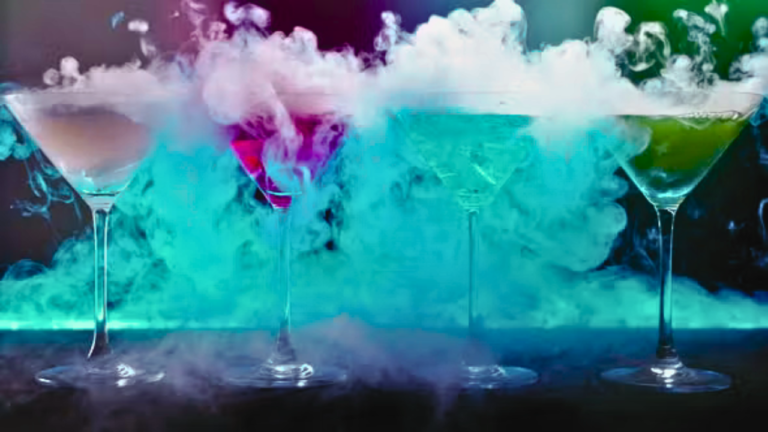What Does Lime Do In A Cocktails?
Understanding what lime does in a cocktail might not be at the top of your to-do list, but it just might be the secret ingredient to elevating your home mixology game. Sure, it adds a punch of citrusy tang, but it does so much more than just that. Let’s untwist the mystery behind this tiny green gem and discover why it’s such a cocktail staple.
What if we told you that it’s not just the zesty flavor of lime that makes it a ubiquitous ingredient in numerous cocktails? Its real magic lies in its ability to bring balance and sophistication to a cocktail.
- The Acidity: The high acidity of lime cuts through the sweetness of other ingredients, making each sip more refreshing and less cloyingly sweet.
- The Balance: Besides balancing sweetness, lime also balances out bitterness and alcohol heat, creating a harmonious blend of flavors that is more pleasing to the palate.
- The Brightness: Lime contributes a bright, fresh top note that can lift the heavy or dense flavors in a cocktail.
- The Variety: There are several varieties of lime, each with its own unique flavor profile, opening a world of possibilities for adventurous mixologists.
Now, with a newfound appreciation for this citrus star, we can dive deeper into the many roles lime plays in crafting a well-composed cocktail. Whether you’re a seasoned bartender or new to the cocktail-crafting scene, you’re bound to find golden nuggets that could transform your cocktail-creation process.
Read also: Do Daily’s Frozen Cocktails Expire?
What is the science behind lime’s effect on cocktails?
Ever wonder why bartenders always seem to have limes nearby while making your favorite cocktail? It’s not just for the burst of color on your glass’s rim or the tart-juicy taste. It’s all about the science.
Lime, being a citrus fruit, is highly acidic. This acidity is an important factor in cocktail making. From a chemistry standpoint, its use serves two fundamental purposes:
- Flavor Balancer: The acidity in limes functions as a flavor balancer in cocktails. Limes can neutralize the sweetness in a drink and prevent it from turning overly sweet or syrupy. Essentially, the acid brings out the drink’s flavors by cutting through other strong or sweet ingredients.
- Modifier: Lime juice can modify drinks. The citric acid in limes helps transform some ingredients via a chemical process called acid catalysis, altering the overall flavor and character of the cocktail.
Furthermore, limes act as coagulants. The acid in lime juice can cause proteins in ingredients like egg whites to coagulate, making them semi-solid. This is particularly useful in cocktails like a whiskey sour, where a foamy top layer is desired.
Lastly, the role of lime is not limited to its citrusy tartness or chemical reaction alone. Lime adds a refreshing, vibrant aroma path to the olfactory senses that significantly impacts drink enjoyment. This aromapath sends a signal to your brain even before the drink hits your taste buds, pre-setting your palate to expect a certain flavor.
What are the most popular cocktails that use lime?
Along with its role in balancing cocktails, lime is a star ingredient in some of the world’s most beloved drink recipes. Here are a few selected highlights:
- Classic Margarita: An iconic blend of sweet and tart, the Margarita pairs the punch of lime with the smoothness of tequila. Add a salt rim, and you have a cocktail that notes all flavor profiles.
- Mojito: This refreshing Cuban classic combines muddled fresh mint, lime juice, simple syrup, rum, and a splash of club soda. With the tangy citrus hit of lime in each sip, it’s no wonder this cocktail is a summer favorite.
- Caipirinha: Brazil’s national cocktail utilizes the whole lime, not just the juice. The lime is muddled with sugar before adding cachaça, a sugar cane spirit, creating a refreshing beverage that is both sweet and a little tart.
- Daiquiri: Another classic, this simple cocktail showcases the arithmetic of a perfect cocktail: rum plus lime plus sweet. Made correctly, it’s a sublime combination.
- Gimlet: A gimlet is a cocktail made of gin and lime juice. A 1928 description of the drink was: gin, a spot of lime, and soda. The description in the 1953 Raymond Chandler novel “The Long Goodbye” stated that “a real gimlet is half gin and half Rose’s lime juice and nothing else.”
These are just a few examples of the plethora of drinks where lime is not merely an additive but a key player in bringing vibrancy and balance to the drinks we love.
How does lime affect the taste and aroma of cocktails?

Lime, a widely favored citrus, brings a unique zestful punch that significantly shapes the flavor and aroma of a cocktail. So, how does this seemingly simple citrus fruit possess such transformative power?
First, lime amplifies the overall taste profile of a cocktail. By providing a tangy touch, it interplays beautifully with sweet, bitter, and umami flavors, creating a symphony of tastes that is vibrant and refreshing. The acidity of lime can balance out overly sweet or rich ingredients, lending the cocktail a clean, crisp edge.
Then there’s the aromatic aspect. Lime has a distinct aroma that is both sharp and refreshing, adding another layer of sensory experience to your cocktail. The tantalizing scent of freshly squeezed lime juice or finely grated zest can elevate the cocktail’s aroma from great to memorable.
Note: A large part of our flavor perception comes from our nose – the aroma of a drink can greatly influence how we perceive its taste.
Let’s not forget that lime enhances the visual appeal of cocktails as well. From a fresh lime slice perched on the rim of the glass to the tiny emerald specks of muddled lime zest dancing in the drink, the presence of lime adds an enticing visual element, making the cocktail more appetizing.
Finally, the ‘ritual’ of adding lime—whether it’s squeezing a wedge, stirring in lime juice, or grating the zest—can dramatically boost the anticipation and enjoyment of the drink.
In conclusion, lime enhances the taste and aroma of cocktails in diverse ways, simultaneously acting as a flavor enhancer, a counterbalance for sweet or rich elements, a source of fragrance, a visual garnish, and a focus of the cocktail preparation ritual.
Read also: Do Daily’s Frozen Cocktails Get You Drunk?
What are the historical uses of lime in mixology?
Lime, the humble green citrus fruit, holds a storied position in the lineage of mixology. Let’s step back in time and trace its journey.
It all began in the 17th century with sailors’ grog—a mix of rum, water, and lime or lemon—consumed aboard ships to allay the scourge of scurvy. The British Royal Navy, in particular, was zealous in adopting limes, the fruit’s vitamin C providing seamen with an effective defensive against the disease.
“Make sure you have a lime, for your rum, sailors, or else the scurvy will get ye!”
From this maritime tradition sprang the drink known as the Navy Grog, the precursor to many modern cocktails. The sailors’ grog gradually acquired sophistication ashore, and the simple citrus inclusion turned into an art of balance, complementing and counteracting other ingredients in various mixtures.
Lime in the Era of Prohibition
It was during Prohibition in the 1920s that lime truly earned its wings in the world of mixology. Barkeepers, striving to mask the harsh taste of illicitly made alcohol, recognized the flavor-masking potential of this citrus wonder.
Prohibition-era cocktails like the Bee’s Knees, combining gin, lime, and honey, were born out of necessity but have firmly established a place in bartending lore because of their unique and refreshing taste profiles.
A Modern Mixologist’s Essential
Today, limes stand as an undisputed essential in any bartender’s toolkit, proving their worth in a range of cocktails, from iconic Margaritas and Mojitos to modern mixology masterpieces. They bring balance, cutting through the sweetness of syrups and the heat of spirits, ultimately ensuring a harmonious libation.
We owe much to this zesty citrus fruit, and it’s fair to say that the journey of lime through mixology’s history is a testament to its enduring appeal and delightful versatility.
Are there any health benefits associated with adding lime to cocktails?

You might be wondering, along with the flavor, do limes add any health benefits to your cocktails? The answer is yes, they do, and that’s something delightful to consider while sipping your favorite concoctions.
Limes, like most citrus fruits, are an excellent source of vitamin C. This vital nutrient helps improve your immune function, facilitates iron absorption, and is active in collagen synthesis, a protein essential for skin and bone health. Splashing a squeeze of lime into your cocktails can offer a burst of this beneficial micronutrient.
Moreover, limes are enriched with antioxidants, chiefly flavonoids, which play a significant role in defending your cells from damage by harmful free radicals. So, the lime in your cocktail not only tantalizes your taste buds but also contributes to your body’s defense mechanism.
| Health Benefit | How Lime Contributes |
|---|---|
| Vitamin C Boost | Limes are packed with vitamin C, an essential micronutrient key to optimum health. In a cocktail, the vitamin C from lime can improve your immunity, promote iron absorption, and stimulate collagen production. |
| Antioxidant Supply | Limes are abundant in antioxidants, especially flavonoids. Adding lime to your cocktail means introducing these antioxidants to your body, helping combat harmful free radicals. |
However, balance is the key. It’s important to remember that while a lime-garnished cocktail can deliver these health perks, it shouldn’t be relied upon as a primary source of nutrients, nor should it be used to justify excessive drinking. Alcohol should always be consumed in moderation. So, indulge in that citrusy cocktail delight, appreciating not only the balance it brings to your beverage but also the touch of healthiness it imparts.
Conclusion
In conclusion, the use of lime in cocktails isn’t just a trend; it’s an integral part of the mixology process, which has held for centuries. Consuming cocktails with lime provides a burst of freshness, makes the taste more complex, and even offers some health benefits.
From its science—where it aids the blending of alcohol and enhances aromatic compounds—to its pivotal role in various popular cocktails, the humble lime is of utmost importance in mixology. Its bold flavor profile beautifully complements various spirits, providing a supreme taste experience.
Note this- The excellence of a cocktail isn’t just about the spirits used, it’s about the clever use of ingredients like lime to elevate the overall experience. An expertly crafted cocktail with perfectly balanced flavors creates a magical experience for the palette.
Even more, the lime’s history and cultural significance in cocktail-making cannot be overlooked. From the time of Prohibition to our modern era, it’s been a constant, always there to enhance, refresh, and blend.
Lastly, let’s not forget about the health benefits. While it shouldn’t be the main reason you enjoy lime-infused cocktails, remembering that it provides vitamin C and aids digestion might make that classic margarita or refreshing mojito just a little bit more enjoyable.
So, the next time you’re sipping on a zesty cocktail, remember the many roles of lime in your drink. It’s not just a garnish or an add-on. It’s an essential part of the story, the experience, and the flavor.
Cheers to the lime!
Read also: How To Price Cocktails?
FAQs
What types of limes are best for cocktails?
The Persian lime is commonly used in cocktails because of its intense, bright flavor. Key limes can also be used for a more distinct, aromatic zest.
How should I store my limes?
Limes can be stored at room temperature if you plan to use them within a week. Otherwise, they should be refrigerated to extend their shelf life.
Can I freeze limes for future cocktails?
Yes, freezing limes allows you to have them on hand at any time for your cocktails. Think about freezing the juice in ice cube trays for easy use later.
How can I get more juice from my limes?
Roll your limes on the counter under the palm of your hand before juicing. The pressure bursts tiny juice-filled cells in the fruit’s flesh, resulting in more juice.
What’s the most effective way to cut a lime for a cocktail?
Cut the lime in half lengthwise, then slice one of the halves into wedges. You can also slice rounds from the other half for garnishing or floating in the cocktail.
How much lime juice should I add to my cocktail?
This varies depending on the recipe, but as a general rule, most cocktails require about 1 ounce of fresh lime juice.
Can I use lime cordial as a substitute for fresh lime juice?
Lime cordial can add a similar tang to a cocktail, but it contains preservatives and sugars. For the freshest, most authentic taste, we recommend sticking to fresh lime juice.
Why do some recipes call for lime zest?
Lime zest has highly concentrated flavors and adds aromatic power to cocktails. Zesting the colored part of the peel provides these oils without adding the bitter taste of the white pith.
Where does the tradition of adding a lime wedge to the neck of a beer bottle come from?
This tradition, typically associated with Mexican beers, is believed to have originated as a way to keep flies away from the beer. It also adds a hint of lime flavor that complements the beer.
What are some unexpected cocktails that benefit from a twist of lime?
Lime can add a refreshing twist to a variety of cocktails, including the classic martini or the whiskey-based old-fashioned. Use it sparingly to avoid overwhelming the drink’s core flavors.

Hello, friends! I’m Tom Elba, the driving force behind cocktailscape.com, your virtual hub for all things cocktails. If you have a passion for mixology or simply enjoy sipping on a well-crafted drink, then you’ve landed in the right place.
At Cocktailscape, I’m dedicated to sharing my love for the art of cocktail-making through tantalizing recipes, expert tips, and vibrant stories from the world of mixology. Whether you’re a seasoned bartender or an enthusiastic home cocktail enthusiast, there’s something here for everyone.
From classic concoctions like the Old Fashioned and the Martini to innovative twists and modern creations, I’m here to inspire you to shake, stir, and sip your way through a world of flavor.
But Cocktailscape is more than just recipes—it’s a celebration of culture, creativity, and community. I delve into the history behind iconic cocktails, explore emerging trends in the industry, and spotlight talented bartenders from around the globe.
So whether you’re looking to expand your cocktail repertoire, host the perfect soirée, or simply unwind with a refreshing drink after a long day, Cocktailscape has got you covered. Cheers to endless possibilities and unforgettable sips—let’s raise a glass together at cocktailscape.com!
